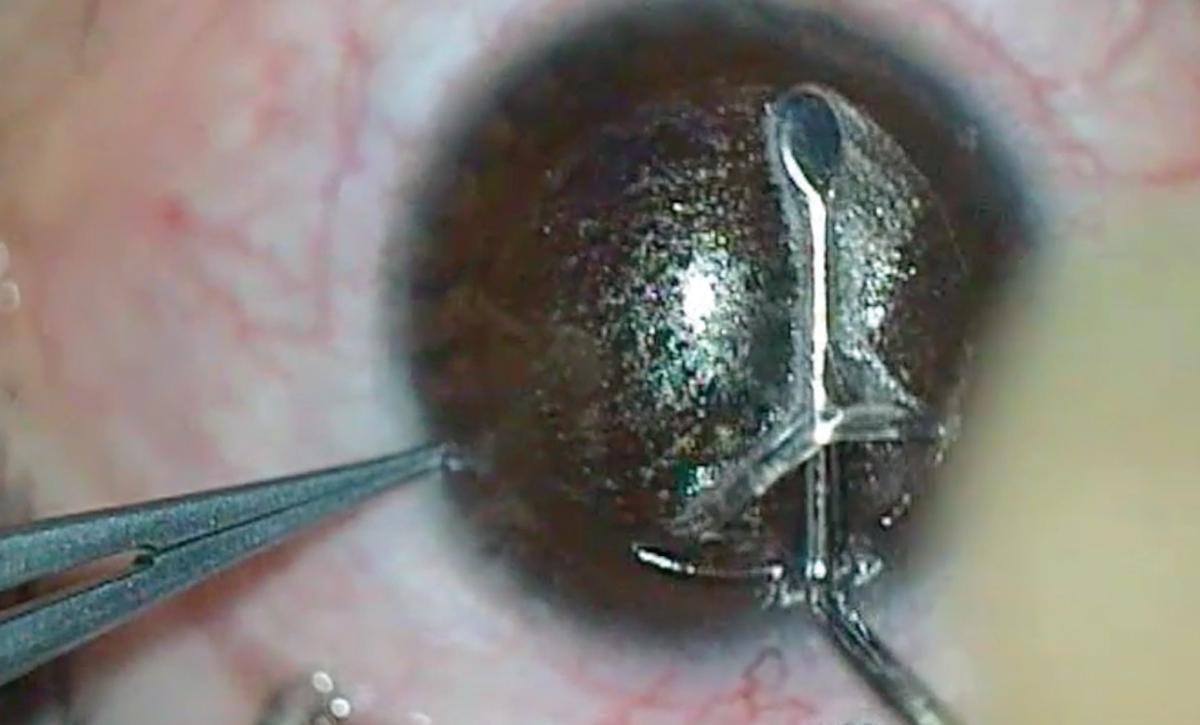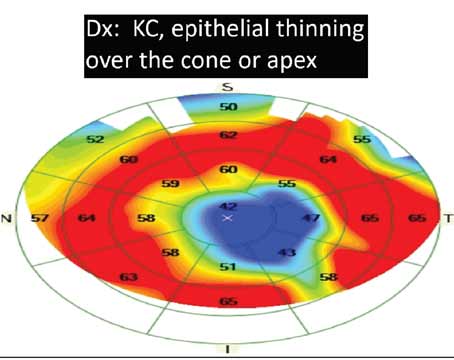Review of Cornea & External Disease In this Issue... Artificial Intelligence for the Cornea Specialist by Christine Yue Leonard DSO and Cultured Endothelial Cell Transplants: A Review by Thomas John, MD, and Anny M.S. Cheng, MD Premium IOLs in Patients with Corneal Conditions by Asim Piracha, MD Diagnosis & Management of Blepharitis by Charles Bouchard, MD, MA |
In recent years, laser vision correction procedures, specifically LASIK, have increased in popularity. In fact, the Refractive Surgery Council has reported that the laser vision correction procedure volume for the fourth quarter of 2021 was 190,509, which is a year-to-date increase of 32 percent over 2020. The total procedure volume for 2021 topped 833,000 for the first time since the council began tracking laser vision correction procedures in 2015.1
Why are LASIK Rates On the Rise?
According to John Vukich, MD, who is in practice in Wauwatosa, Wisconsin, there are several reasons that LASIK rates increased starting in 2020, and the effects of the pandemic are at the top of the list. “During the pandemic, people were working from home. They were wearing masks, and if they had glasses, there was the potential for masks fogging the lenses,” he notes. “And, then, there were government incentives that provided some discretionary income, and people weren’t dining out or traveling. All of that did, in fact, increase LASIK volumes. This was seen across the board by all providers of LASIK. Now, the question that we have is whether there will be some return to pre-pandemic numbers. The economic incentives have dried up, and the majority of people aren’t wearing masks anymore. Was this just a temporary blip fueled by circumstance, or was this the renaissance of refractive surgery? The answer is unclear.”
Edward E. Manche, MD, director of refractive surgery at Stanford University, agrees, and adds that it was easier for patients to attend medical appointments when working from home during the pandemic. “I also think that people became more conscious of their facial appearance when they were on Zoom daily,” he says. “Instead of putting in contacts every day, they elected to spend money on laser vision correction. I think all of the above are potential reasons why the volume increased.”
How to Capitalize on the Boom
Now that most people are back to work in the office and don’t have as much disposable income because travel and other activities have resumed, how can ophthalmologists keep the boom going? Some practices are choosing to advertise, while others are relying on word of mouth. “My practice doesn’t advertise at all,” says Dr. Manche. “We have a web presence, but 90+ percent of our patients are word-of-mouth referrals. We also get some physician referrals, as well.”
Dr. Manche adds that the decision of whether to advertise depends on the practice’s style. “There are very busy practices who do a lot of advertising,” he avers. “It’s just not the style of my practice. I’m in a unique setting here, so we don’t do it. However, some doctors have increased their advertising because the volume has ticked up, and they want to capitalize on it while the interest is there.”
Dr. Vukich believes that the best advertising for LASIK is word of mouth, but that other forms of advertising may be needed. “Peer groups share their experience with their friends and their acquaintances,” he notes. “The results have always been excellent and have actually never been better. With the latest generations of instrumentation, we can achieve a very predictable outcome and high level of quality. So, now, there’s been a resurgence of interest, and patients who’ve had it will continue to spread the word. So, what can we as surgeons do proactively? What are the things that are within our control? I think that there is now a reason to believe that we can once again start to advertise to consumers. We need to advertise that we have this capability. Many practices cut back on their LASIK advertising simply because, when the market was down, there was less income to devote to that. It was really kind of a downward spiral for a while. As a group, we need to acknowledge that this is an important service and a high-quality product.”
 |
| Though LASIK remains the most popular refractive procedure in the United States, small-incision lenticule extraction is in its beginning stages, and some experts think it has the potential to be improved and eventually challenge for the crown. |
He also notes that the decision is associated with an increased quality of life. “I think there’s a trend toward the ‘experience economy’ that we’re seeing with the prime demographic that’s looking at LASIK,” says Dr. Vukich. “These are individuals who may have delayed buying a home. They may have student loan debt. However, they will make it a priority to go on vacation or plan another memorable quality-of-life experience. LASIK is clearly an every-waking-moment of every day quality-of-life experience. That’s the reality that we need to continue to make sure people understand.”
Steven E. Wilson, MD, from the Cleveland Clinic, says that his practice did a lot of marketing in the early days of LASIK. “We got one of the first microkeratomes, which was the ACS,” he recalls. “When the Hansatome came out, we converted to that. During this time, we did a lot of marketing, which consisted of radio ads and e-mailing patients of the Cleveland Clinic. We also marketed to employees, who received a 20-percent discount at that time. After about 10 years, we basically stopped marketing because people began coming just from word of mouth. Patients would visit the Cleveland Clinic and see that we had a refractive surgery practice. It just kind of fed itself.”
Dr. Wilson adds that his practice has had some ups and downs in volume, with the worst period being during the crash in 2008. “Then, the volume slowly came back and was pretty consistent for several years,” he says.
In 2022, the Cleveland Clinic has seen a huge increase in LASIK cases. On January 1, they announced that all employees who were on Cleveland Clinic health insurance could undergo bilateral LASIK or bilateral PRK for $150 out of pocket. The rest of the fee is covered by Cleveland Clinic insurance. “Since that announcement, every one of my surgery days has been completely filled,” Dr. Wilson says. “I’m booked out for actual surgery for over six months, and I’m totally booked for the next year just for screenings. We have a list of people who want screenings when more spots open up next year. That’s not just me; that’s all of our refractive surgeons. So we’re doing the most procedures we’ve ever done.”
LASIK: The Procedure of Choice
LASIK was approved by the FDA for use in 1995 and has remained at the forefront of refractive surgery since that time. According to Dr. Manche, the majority of patients still prefer LASIK, even though new procedures are available. “In my practice, refractive surgery volume is about 80 percent LASIK, 15 percent PRK, and about 5 percent SMILE,” he says. “LASIK is still the dominant refractive surgical procedure, both in my practice and nationwide.”
He believes that this is a testament to how effective the procedure is. “I’ve been performing PRK and LASIK for 27 years,” he says. “It has worked incredibly well, even from the early days. Obviously, it’s significantly better now. It’s safer and much more sophisticated. A lot of innovations have occurred along the way, so it’s not the same LASIK surgery we did back in 1995. Patient satisfaction is 95+ percent. It’s really hard to displace something that has such a high success rate.”
Dr. Wilson agrees, noting that no other procedure is as precise, safe, and comfortable for the patient as LASIK. “Additionally, there’s instant gratification, typically by the next morning,” he notes. “I still do quite a bit of PRK, but I perform these procedures in patients who aren’t good LASIK candidates, either because their cornea is too thin for their level of correction or because they have inferior steepening on their corneal topography—not keratoconus, just inferior steepening. With PRK, patients’ vision won’t reach the final outcome for at least five days to two weeks. After about five days, most PRK patients are able to drive, but it sometimes takes even longer. In comparison, most LASIK patients are driving the next day.”
Dr. Wilson’s practice owns a laser for SMILE. “That laser is my favorite flap-making laser, and two of my colleagues perform some of these SMILE procedures, but it’s never going to reach the volume of LASIK because it’s more complex, more things can go wrong, and some patients have delayed visual recovery,” he opines. “Additionally, if you want to enhance patients after SMILE, there are issues with that. Companies are working on technology to try to repeat SMILE, but that’s problematic, and you can end up with a fragment of the lenticule left inside the cornea. The simple answer is that there’s nothing that provides the same immediate gratification that LASIK does with a similar safety profile.”
According to Dr. Manche, LASIK is the gold standard, but SMILE is a strong contender. “SMILE is definitely making a run,” he says. “Of all the things that could replace LASIK, SMILE might in the future. SMILE is currently in its infancy, and only one company’s laser is currently approved for use in the United States. Other companies are throwing their hats in the ring and are starting to test their own systems, which is how I believe you spur advances. It happens when multiple companies are developing the technology. So, hopefully it gets better and better. If I could look into my crystal ball, I’d say that LASIK is still going to be done in the majority of cases down the road. It may get to a point where there are equal numbers of SMILE surgeries done as LASIK in the United States, but I think it’s going to take a while for the results to get as good as we see with LASIK.”
Dr. Vukich adds that the outcome with LASIK is indisputably excellent and consistent. “In the past, there were some vocal opponents of LASIK who were trying to say it was a dangerous procedure that didn’t have the outcomes that we thought were safe,” he recalls. “But, the test of time has proven them wrong. This is a safe procedure that is very predictable in terms of its outcome. The technology that we have now provides an even more consistent and excellent outcome. It’s always been good, but, like with anything technology-driven, it’s now faster, better and more predictable. That’s just the nature of the technology that drives this type of correction. It’s getting incrementally better from a very high level already. Incremental improvements are obviously what we would expect along the way. So why has it stood the test of time? Because it works, it works well, and it provides a very satisfying outcome.”
Dr. Manche is a consultant and performs sponsored research for Johnson & Johnson Surgical Vision. Additionally, he performs sponsored research for Carl Zeiss Meditec. Drs. Wilson and Vukich have no relevant financial interests to disclose.
1. American Refractive Surgery Council report. https://americanrefractivesurgerycouncil.org/press-room/refractive-surgery-council-reports-32-ytd-increase-in-laser-vision-correction-procedure-volume-over-2020/. Accessed August 12, 2022.





